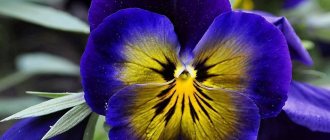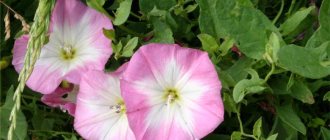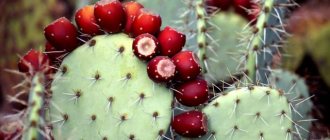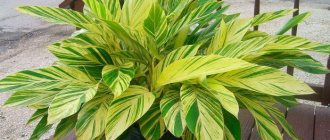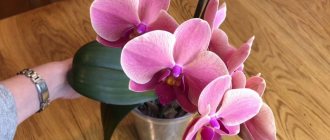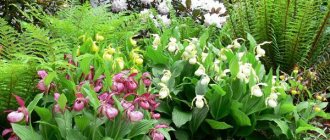It has a specific, recognizable, delicate, spicy aroma and light tart taste.
The benefits of St. John's wort have been known since the times of Ancient Greece and Rome. Hippocrates, Dioscorides, Pliny the Elder, and Avicenna wrote about him in their works. The medicinal properties of St. John's wort are recognized by official medicine for the treatment of diseases of the oropharynx, gastrointestinal tract, liver, kidneys, etc. Plant preparations have shown a good effect on skin diseases and various damage to the skin.
The pharmaceutical industry produces St. John's wort preparations - imanin and novoimanin, which are natural antibiotics. They are also used for skin diseases, respiratory diseases, etc.
In folk medicine, the herb St. John's wort is used much more widely, including for disorders of the nervous system, diseases of the genitourinary organs, joints, diabetes, etc. In complex therapy, the plant is used to treat some forms of cancer. In addition, the indications of St. John's wort for getting rid of alcohol addiction and smoking are interesting. It is used both independently and as part of many herbal preparations.
St. John's wort has found application in the alcoholic beverage industry and in the production of tonic drinks. The plant is included in bitter liqueurs “St. John’s wort”, “Balsam”, vodka, wine “Vermouth”, etc.
St. John's wort is also used in the food industry and cooking. As a seasoning, the plant gives fish dishes a specific spicy aroma and taste. The flowering herb St. John's wort (flowers and leaves) is a tea substitute.
St. John's wort is a honey plant.
Types and varieties
The genus St. John's wort is very numerous and its representatives have found application in a variety of fields. In addition to the St. John's wort species, it includes 457 species, including:
- St. John's wort – Hypericum erectum;
- St. John's wort – Hypericum ascyron;
- St. John's wort – Hypericum humifusum;
- graceful St. John's wort – Hypericum elegans Stephan ex Willd.;
- St. John's wort (hairy) – Hypericum hirsutum;
- St. John's wort – Hypericum maculatum Crantz;
- St. John's wort – Hypericum scabrum
- St. John's wort – Hypericum rumeliacum Boiss and other species
have similar properties and are used in folk medicine along with St. John's wort.
St. John's wort (Hypericum attenuatum), St. John's wort (Hypericum elongatum), St. John's wort (Hypericum quadrangulum L.), etc. also have medicinal properties.
Young shoots of Kamchatka St. John's wort (Hypericum kamtschaticum) are used as food, and the leaves and herbs are used to brew tea.
Many species are decorative, for example, St. John's wort (Hypericum androsaemum), St. John's wort (Hypericum calycinum), St. John's wort (Hypericum kamtschaticum), etc.
St. John's wort. Latin name: Hypericum perforatum L.
St. John's wort. Other names: common St. John's wort (holey, yellow), St. John's wort, hare's blood, red herb, Ivanovo's blood, valiant blood, krovtsa, bloodworm, aphids, Svetoyanskoe potion, etc.
Features of St. John's wort
St. John's wort, or medicinal, is also popularly called hare's blood, yellow St. John's wort, St. John's wort, red herb, krovets, thornwort, bloodwort. From a thin but powerful rhizome, several branched dihedral shoots grow annually, which reach a height of 0.8 m. The green, erect shoot gradually acquires a brown-red color. There are 2 longitudinal grooves running along the smooth surface of the stem. Opposite sessile leaf plates are entire-edged and have an oblong-ovate or elliptical shape. Their length is about 30 mm and their width is approximately 15 mm. There are many glands on their surface, which is why the plant is called perforated. Regular flowers of golden yellow color have long stamens that grow together into 3 bunches. These flowers are collected in racemose-corymbose apical inflorescences. Flowering begins in June and lasts 20–30 days. The fruit is a multi-seeded triangular capsule with a mesh surface. The ripe fruit cracks.
St. John's wort. Useful, medicinal properties of the herb, contraindications, traditional medicine recipes
Botanical description
St. John's wort is a herbaceous perennial. Height: 30-80, up to 1 m. The rhizome and roots of St. John's wort are thin, branched, underdeveloped, from which one or several stems grow annually.
The stem is vertical, straight, bare, dense, cylindrical, with two longitudinal edges, branched in the upper part.
The leaves of St. John's wort are small, opposite, sessile, smooth, oblong-oval, ovate, obtuse, entire. Length: 0.7-3.5 cm, width: up to 1.4 cm. They have numerous translucent light dots and rare black glands containing a coloring essential oil substance, which, when refracted under rays of light, gives the impression that the leaves are covered with holes.
The flowers are oblong-oval with a five-membered calyx and corolla. Collected at the tops of the stem and branches into corymbose panicles. Color: golden yellow, light orange with black-brown dots on the underside of the petals.
The fruit is an oblong-ovoid, three-locular, multi-seeded capsule that opens with three valves. The seeds of St. John's wort are small, oblong, fine-celled. Color: dark brown, dark brown. Length: about 1 mm. Weight of 1000 seeds: 0.12-0.14 g.
St. John's wort blooms in June-August. Rarely in the first year. Abundant flowering and fruiting begins in the second year. The fruits ripen in July-September.
Reproduces mainly by seeds and root suckers.
↑ Distinctive features of other similar species of St. John's wort
St. John's wort
, or
St. John's wort
(lat.
Hypericum quadrangulum
) - is especially similar and grows in the same places as the ordinary one, the stem is tetrahedral (the ordinary one has two lateral ribs), the sepals are not sharp, but blunt and, in addition, almost equal along the length of the ovary.
St. John's wort
, or
rough St. John's wort
(lat.
Hypericum scabrum
) - the stems are cylindrical, abundantly fluffy, the leaves are also densely pubescent; sepals with glandular cilia (look through a magnifying glass).
St. John's wort graceful
(lat.
Hypericum elegans
) - a stem with two elevated leaves (ribs), but the sepals are not bare, but have glandular hairs along the edges (look through a magnifying glass). According to GOST 15161-69.
According to The Plant List database, the genus St. John's wort includes 458 species.
Habitat
Where does St. John's wort grow? The plant is distributed in Western Europe, Africa, China, North America, as well as almost the entire territory of the CIS, including Belarus, Ukraine, the Caucasus, Western Siberia, and the southeastern mountainous part of Central Asia.
The habitat of St. John's wort is deciduous and pine forests, clearings, and forest belts. It can be found in forest clearings, edges, sandy, mountain slopes, hills, meadows, field edges, among bushes, along roadsides. Sometimes it forms sparse thickets.
St. John's wort is also cultivated as a medicinal plant.
St. John's wort: brief botanical information, homeland of the plant
The plant belongs to the St. John's wort family. Its homeland is the subtropical latitudes of the Northern Hemisphere. A lot of species are also represented in the Mediterranean.
St. John's wort is a perennial, subshrub, or in rare cases a shrub or even a tree. Various sources indicate that about 110−400 species of this medicinal plant are known. Among them there are both deciduous and evergreen representatives.
St. John's wort flowering
All representatives of the genus have characteristic features. These include:
- bright yellow color of flowers;
- the presence of many stamens;
- opposite entire leaves;
- fruits in the form of a box with many very small seeds.
Otherwise, representatives of one species or another have their own distinctive characteristics.
Collection and preparation
For medicinal purposes, the above-ground part of the plant, less often the flowering tops, is harvested.
St. John's wort is harvested during the flowering period, before the fruit appears. The raw material is the herbaceous part 25-30 cm high, without the rough base of the stems, which is cut with a knife or sickle.
When collecting St. John's wort, you should not uproot the plants, as this will lead to their death. It is also necessary to leave some developed specimens for restoration.
Drying begins as quickly as possible, since the grass quickly warms up and then darkens when finished. Drying is carried out outdoors in the shade, under a canopy with good air ventilation, or indoors, spreading it in a thin layer (5-7 cm), remembering to turn it over often.
It is also permissible to dry the grass by tying it into small bunches, which are hung in the shade on a rope.
Finished dried St. John's wort raw materials are stored in boxes or bags made of natural materials in a dry, well-ventilated area. Shelf life of St. John's wort: 3 years.
Smell: balsamic, taste: bitter-astringent.
Benefits of St. John's wort tea
St. John's wort tea.
Photo: Yandex.Pictures The plant is unique, “Just as bread cannot be baked without flour, many diseases cannot be cured without St. John’s wort,” as folk wisdom says. A cure for 99 diseases, that’s what they say about St. John’s wort; it is brewed and drunk as tea for all kinds of ailments. This is a pleasant and healthy drink.
St. John's wort tea has great healing power. It stops inflammatory processes, stimulates the functioning of the heart and endocrine glands. regulates the functioning of the gastrointestinal tract, normalizes the central nervous system, and has a general strengthening and tonic effect.
St. John's wort is an ideal remedy for strengthening the nervous system and is a natural antidepressant. In critical life situations, it is useful to take three to six cups of St. John's wort tea.
St. John's wort tea will help normalize vegetative fluctuations if you are sensitive to weather changes.
For mood swings associated with hormonal fluctuations during menopause, tea made from St. John's wort or a mixture of equal proportions of St. John's wort and hop cones is recommended.
For children and adults who cannot concentrate and concentrate, tea made from St. John's wort and lemon balm will help. This pleasant-tasting blend is an ideal tea for breakfast, before class or an exam.
Tea made from the herb St. John's wort is very helpful for those people who quickly get tired of exhausting work.
Herbal tea is used as an astringent for gastrointestinal diseases, reduces the production of copious mucus in diseases of the respiratory tract, and a tonic for cardiovascular diseases.
St. John's wort tea with motherwort cures severe stress, depression, and their consequences. Tea from the herbal collection can be drunk with honey.
Previously, in the army, infusions and decoctions from the herb were given to soldiers who made long walks on foot.
St. John's wort tea recipe
- Pour one or two tablespoons of chopped herbs with flowers and leaves into an enamel teapot with one liter of water. Place on fire and bring to a boil. Leave for 15–20 minutes, strain through a strainer and drink with honey and sugar, like tea.
Chemical composition
The beneficial and medicinal properties are determined by the components in the chemical composition of St. John's wort. The aerial part contains essential oil - in the grass 0.1-1.25%, in flowers 0.47%, which includes alpha-pinene, myrcene, cineole, geraniol, resinous substances (up to 6%), saponins, and also vitamins P, PP, carotene, choline, ascorbic and nicotinic acids.
In addition, coloring substances (hypericin, pseudohypericin, franguloemodin, astranol, etc.), tannins (up to 13%), flavonol glycosides (hyperoside, quercetin, quercitrin), alkaloids, phytoncides, azulene, ceryl alcohol, etc. were found in the grass. also choline, carotene (up to 55 mg%), vitamins C, P PP.
The composition of St. John's wort flowers is as follows: carotenoids, resinous substances (17%), etc. The roots contain carbohydrates, saponins, alkaloids, coumarins, flavonoids, etc.
Macro- and microelements were also found in St. John's wort: potassium (16.8 mg/g), calcium (7.3 mg/g), magnesium (2.2 mg/g), iron (0.11 mg/g), as well as boron (40.4 µg/g), cadmium (7.2 µg/g), molybdenum (5.6 µg/g), selenium (5 µg/g), zinc (0.71 µg/g), copper (0.34 µg/g), etc.
Protecting women's health
Traditional recipes for healers:
- Composition that reduces pain during menstruation (especially during puberty). Mix in equal proportions valerian root, St. John's wort stems, rue herb, mint shoots, tripoli leaves, yarrow flowers, chamomile petals. Pour 30 g of the collection into 500 ml of boiling water, leave for several hours in a thermos. The composition is taken three times a day, 70-100 ml. The course of treatment is 90 days. After a month, therapy can be repeated (if necessary).
- Herbal mixture to stimulate menstruation (with scanty and irregular menstruation). Ingredients: rose hips (30 g), parsley root (30 g), wormwood herb (30 g), fennel seeds (15 g), juniper berries (15 g), parsley seeds (15 g), St. John's wort shoots (15 g) , cinquefoil leaves (15 g) and rue (10 g). Grind the indicated components, mix and pour boiling water (500 ml of water per 30 g of collection). The drug is taken 100 ml at least 2 times a day. Duration of therapy is 2 months.
- A phytocomposition that normalizes the menstrual cycle during oligomenorrhea (excessively long intervals between menstruation). The collection includes 3 components (in equal proportions): valerian root, St. John's wort herb, wild thorn flowers. The raw materials are steamed with boiling water (at the rate of 200 ml of liquid per 20 g of dry mixture). The drug is consumed immediately after cooling once a day (in the evening).
- Medicinal decoction for uterine fibroids. Active ingredients: immortelle (20 g), St. John's wort (20 g), yarrow (20 g), chamomile (15 g), bearberry (15 g), knotweed (15 g), strawberry (15 g), nettle (10 g) . Steam dried flowers (20 g) with boiling water (500 ml), boil in a water bath for 3 minutes. The composition is consumed twice a day, 150 ml for 1.5 months. After 10 days, treatment can be resumed.
- A remedy for reducing the volume and duration of menstruation (for hyper- and polymenorrhea). Mix 45 g of horsetail herb, 30 g of St. John's wort stems, 30 g of centaury shoots, 25 g of juniper fruits, 25 g of plantain leaves. The indicated ingredients are poured with boiling water (at the rate of 60 g of mixture per 900 ml of boiling water). Infuse the composition in a thermos or a cooling oven (4-5 hours). The medicine is taken 15 minutes before each meal, 100 ml. The course of treatment is 14 days.
In addition, it is advisable to use St. John's wort externally as part of solutions for vaginal irrigation (especially for severe itching and thrush). To do this, mix 30 g of oak bark, 30 g of St. John's wort, 15 g of chamomile flowers, 15 g of bearberry leaves, pour in 4 liters of boiling water and boil for 20 minutes over low heat. After this, 60 g of sea salt (not iodized) and 2 ml of eucalyptus tincture are added to the solution. Irrigation is carried out with a warm solution 3 times a day.
Use in folk medicine
A large number of people, freely using plants to treat various diseases, believe that they are absolutely harmless. However, among medicinal plants there are potent, toxic and even poisonous ones. In addition, many people, especially older people, have several chronic diseases.
Therefore, in order for the treatment to be effective, when using it, one should take into account the beneficial and medicinal properties of St. John's wort and the contraindications that it has, and this can only be done by a doctor. Based on this, before you start taking St. John's wort preparations, consult a doctor, or better yet, a herbalist you trust. The information given below is for informational purposes only.
Important! The information presented in the material is for informational purposes only. Before use, be sure to consult a specialist.
Cardiovascular diseases
The benefits of St. John's wort have been used for the prevention and treatment of cardiovascular diseases. A decoction, infusion, or tincture of the plant improves blood circulation, especially venous circulation, and blood supply to certain organs, and strengthens capillaries. Relieves spasms of blood vessels and capillaries.
Since St. John's wort increases blood pressure, its preparations, including juice, are prescribed for hypotension. It also stimulates cardiac activity and is used for certain heart diseases, such as heart failure, etc. In the latter case, in addition to the traditional herbal decoction, an infusion of St. John's wort inflorescences is used.
For hemorrhoids, the decoction is used in the form of baths and enemas.
For the head
As an antispasmodic and analgesic, St. John's wort decoction and juice are drunk for headaches, especially those caused by stress and nervous tension.
The pharmaceutical drug Novoimanin is prescribed for ear diseases.
Colds and bronchopulmonary diseases
Traditional medicine widely uses the beneficial and medicinal properties of St. John's wort for the treatment of respiratory diseases. A decoction and solution of alcohol tincture is used for gargling, including for sore throat. In addition, they are used for rinsing the nose, both as hygiene procedures and for sinusitis. Also, for sinusitis, the nasal cavity is additionally lubricated with St. John's wort oil.
The decoction, infusion, and juice are drunk for colds and pulmonary diseases, including tuberculosis, cough, bronchial asthma, etc. An infusion of inflorescences is also recommended for coughing and choking. For tuberculosis, treatment with St. John's wort in the form of a decoction in white wine gives a good effect.
Aerosol/steam inhalations with St. John's wort preparations, including the pharmaceutical drug novoimanin, are very powerful. In addition to traditional diseases of the oropharynx, these procedures have worked well for bronchitis, lung diseases such as pneumothorax, abscess, purulent pleurisy, purulent lesions of the pleura, etc.
Gastrointestinal diseases
The beneficial and medicinal properties of St. John's wort are effective for both the treatment and prevention of diseases of the gastrointestinal tract. The plant improves appetite, normalizes digestion and intestinal motility.
Preparations of St. John's wort - decoction, infusion, juice, have an astringent, anti-inflammatory, antiseptic effect, promote tissue regeneration, and relieve intestinal spasms. St. John's wort is recommended for treatment of gastritis, hyperacidity, stomach and duodenal ulcers, gastric catarrh, colitis, diarrhea, including bloody diarrhea, dysentery, flatulence, and helminthic infestation.
St. John's wort oil is a highly effective means of versatile action. It is used as a wound healing agent for peptic ulcers of the stomach and duodenum. Essential oil is used for the same purposes.
St. John's wort seeds have a laxative effect.
For the liver
St. John's wort has great benefits for the liver. Plant preparations have an antispasmodic effect on the smooth muscles of the bile ducts, which increases the outflow of bile and prevents its stagnation in the gallbladder. As a result, the possibility of stone formation is prevented.
As a medicine, St. John's wort (decoction, juice) is used for some diseases of the liver and gall bladder, such as bile stagnation, cirrhosis of the liver, jaundice, cholelithiasis, etc.
Kidney and bladder diseases
The beneficial and medicinal properties of St. John's wort and its use are recommended for the treatment of certain diseases of the kidneys and bladder. Internal administration of plant preparations has an anti-inflammatory effect, relieves spasms of the ureter, increases filtration in the renal glomeruli and, as a result, increases diuresis (urination).
St. John's wort decoction and juice are taken for kidney bleeding, kidney and urolithiasis, cystitis, bedwetting, including in children, etc.
For edema, both internal and external use of St. John's wort is used. Fresh herbs are crushed using a meat grinder or blender. The resulting mass is applied to the sore spots in the form of overlays and then secured. The use of juice, St. John's wort oil for lubrication, lotions, etc. is also effective.
Oncological diseases
In complex therapy, traditional medicine uses St. John's wort preparations to treat cancer. The decoction is taken for cancer of the stomach, liver, and ovaries.
For breast cancer, lotions from St. John's wort vodka tincture are applied to the affected breast 2-3 times a day. Duration 20-30 minutes.
St. John's wort leaves crushed using a meat grinder or blender in the form of patches are effective against malignant ulcers. For skin cancer, applications with St. John's wort oil are made to the affected areas as often as possible.
For the nerves
St. John's wort recipes have a positive effect on disorders of the nervous system, such as neurasthenia, nervous convulsions, restless sleep, overwork, etc. Taking a decoction or infusion relieves nervousness, fatigue, and has a stimulating effect.
For women
St. John's wort is widely used in gynecology. The decoction and juice are drunk for uterine bleeding, menorrhagia, inflammation of the genital organs, sexually transmitted diseases, etc.
For cervical erosion, tampons with oil have a good effect. For mastitis and mastopathy, lotions are made from a decoction of St. John's wort on the sore breast and lubricated with oil. Also, for mastitis, the already mentioned pharmaceutical preparations Imanin and Novoimanin are recommended externally.
For men
For men, St. John's wort is of interest as a remedy for the treatment of prostatitis.
Joint diseases
The plant has a good effect on joint diseases. What does St. John's wort treat? Decoction, infusion, juice are drunk for radiculitis, gout, arthritis, sciatica, rheumatism, neuritis, inflammation of the sciatic nerve, convulsions, etc. For arthritis, lotions and rubbing are also done at the same time.
Also, for rubbing against joint diseases, a mixture consisting of St. John's wort and mustard oils, camphor and turpentine is prescribed.
Skin diseases
Both official and traditional medicine recommends St. John's wort for various skin diseases, such as eczema, psoriasis, pyodermatitis, vitiligo, allergic diseases, strepto-staphyloderma, panaritium, scrofula (scrofula), phlegmon, boils, carbuncles, etc. Treatment is usually carried out comprehensively, taking St. John's wort, both internally and using externally in the form of lotions, washings, rubbing, etc.
Also for these purposes, the already mentioned pharmaceutical drugs imanin and novoimanin are used.
Wounds, cuts, burns
As an effective antimicrobial, antiseptic, bactericidal, anti-inflammatory, wound-healing, analgesic agent, St. John's wort is of great use for the treatment of various damage to the skin, such as gangrene, abscesses, some forms of osteomyelitis, ulcers, including trophic ones, 2nd and 3rd degree burns, wounds, including including infected, cracks on the lips, hands, nipples, paronychia, etc. St. John's wort oil, including essential oil, is most often used. A decoction, infusion, or tincture solution is used for washing, rubbing, lotions, etc.
For burns, it is recommended to lubricate the damaged surfaces with a mixture of beaten egg whites and St. John's wort oil (for 5 whites, 2 tablespoons of oil).
The already mentioned drugs imanin and novoimanin are also applicable for these purposes. In addition, along with St. John's wort oil, they are used in postoperative practice. St. John's wort oil helps with burns when 2/3 of the body surface is affected.
Application of St. John's wort to pharmacology
In pharmacology, St. John's wort has found very wide use. Medicines based on it have a very wide spectrum of action:
- antidepressant;
- antispasmodic;
- anti-inflammatory;
- disinfectant;
- astringent.
St. John's wort
Thanks to the presence of vitamins in the plant, the therapeutic effect is enhanced significantly. St. John's wort is mainly used as an antispasmodic. It works best on the smooth muscles of the intestines, stomach and blood vessels. There is also a positive effect on the bile ducts.
Dosage forms
Decoction
10 gr. (1.5 tbsp) pour 200 ml of St. John's wort raw material. hot water. Bring to a boil and simmer over low heat for 30 minutes. Remove from heat, cover with a lid, insulate and leave for 10 minutes. Strain, squeeze out the raw materials. Using boiled water, bring the resulting broth to its original volume. Store for no more than two days in a cool place, such as a refrigerator.
Take 1/3 tbsp. three times a day half an hour before meals.
Tincture
Place crushed St. John's wort herb in a glass container (preferably dark glass) and pour in high-quality vodka or 70% alcohol in a ratio of 1:5. Close the container tightly with a lid and leave in a dark place at room temperature for a month, remembering to shake periodically. Strain, squeeze out the raw materials. Shelf life of St. John's wort tincture: 4 years.
Take 40-50 drops in a small amount of water 3-4 times a day. For rinsing, dissolve 30-40 drops in 1/2 tbsp. boiled water.
Oil
200 gr. fresh herbs, or better yet St. John's wort inflorescences, pour 400 ml. unrefined sunflower oil (preferably olive oil). Knead the raw materials tightly; under no circumstances should they protrude above the surface of the oil. Otherwise, mold will appear, and this cannot be allowed.
Close the container tightly with a lid and leave in a dark place at room temperature for 2-3 months, remembering to stir periodically. You can use the oil after 3-4 weeks. Strain, squeeze out the raw materials. Store in a dark, cool place
St. John's wort oil is close in its medicinal properties to sea buckthorn oil.
Juice
St. John's wort juice is obtained from the fresh above-ground part of the plant (without stems), collected in June-July. The grass is washed well and crushed using a meat grinder or blender. Squeeze out the juice from the resulting mass using gauze.
Take 1 tbsp. juice mixed with the same amount of natural honey, three times a day half an hour before meals.
Juice from fresh grass contains 1.5 times more active ingredients than St. John's wort tincture.
What kind of St. John's worts can be grown in central Russia?
Having chosen the most decorative ones from a variety of types, Plotnikov. L. divided them into three groups according to winter hardiness. Plants of the first can tolerate an annual minimum temperature of up to -29 °C, the second - up to -24 °C, and the third - up to -17 °C. It is the species from the first group that are more or less reliable in central Russia. For example, St. John's wort ( H. densiflorum) and Kalma ( H. kalmianum).
The first grows in the eastern, the second - in the central states of North America. They are distinguished by the height of the bush. If St. John's wort can reach 3 m, then Kalma's St. John's wort does not exceed 1 m. Both species have leathery to the touch, dark green leaves with a bluish tint. Their golden-yellow flowers, collected in dense corymbose inflorescences, appear in mid-summer and continue to open until autumn.
Species of the second group, despite their relative resistance, should be planted in places protected from cold winds, and in the winter the root system should be covered with leaves or spruce branches. I’ll immediately make a reservation that at temperatures below -25 ° C these measures will be insufficient, the plants may suffer or even die. Therefore, it is safer to grow them south of Moscow. The most interesting species of this group can be called the Olympic St. John's wort (H. olimpicum). Its homeland is Bulgaria and Türkiye.
It is a dwarf, with drooping branches, or even a creeping deciduous subshrub with small, up to 4 cm in length, bluish opposite, elliptical, thin leathery leaves. Its lemon-yellow or bright yellow, sometimes with a reddish tint, star-shaped flowers, collected in bunches, appear at the ends of the shoots in July. St. John's wort has a variety called " Citrinum " with large flowers, up to 3.5 cm in diameter.
St. John's wort (N. androsaemum) is native to the Caucasus. It has long golden stamens protruding from the yellow star-shaped flowers. Its fleshy, bright red capsule fruits, which turn black when ripe, are also beautiful. In nature, there is a form with white-pink leaves, which made it possible to create varieties with dark purple and golden yellow leaves.
St. John's wort (H. calycinum), growing in the Crimea and Transcaucasia, also belongs to this group This is an evergreen, very low-growing shrub, not exceeding 0.2-0.6 m in height, but has large, up to 8 cm in diameter, golden-yellow single flowers and leathery, dark green, shiny leaves. Late and long flowering, from July to September, significantly increases the value of this ornamental species.
Finally, the third group includes many very spectacular, but at the same time the most pampered St. John's worts. Their decorative qualities are fully manifested only in the south. This is, for example, a dwarf, prostrate, evergreen subshrub, John's wort ( H. coris). Its height does not exceed 45 cm. Small linear leaves are bluish in color. The golden-yellow petals have a reddish tint along the veins. It is ideal for rockeries and dry scree.
In the eighties of the 19th century, a hybrid species was obtained - Moser's wort (N. x moserianum) - a shrub 0.3-0.5 m in height with arched drooping red shoots and bluish-green leaves. The flowers reach 7 cm in diameter. Their red or pink stamens are especially beautiful. Its variety “ Tricolor” is famous for the fact that on one plant at the same time there are variously colored leaves: cream, pink and green.
Contraindications
In order for the treatment to be beneficial, it is necessary to take into account the medicinal and beneficial properties of St. John's wort and the contraindications that it has.
Some sources and authors classify St. John's wort as a poisonous plant, which requires caution in use and adherence to the exact dosage. If the concentration and/or amount of plant preparations taken is exceeded, illness may occur. Side effects of St. John's wort include:
- headache,
- loss of appetite,
- nausea,
- vomiting
- constipation,
- discomfort in the liver area,
- feeling of bitterness in the mouth,
- decreased sexual function,
- hives
Although St. John's wort is recommended for the treatment of gastritis with high acidity and stomach ulcers, in case of an overdose severe cramps and pain are possible.
Also, long-term treatment with St. John's wort should not be carried out. It is necessary to take breaks.
Since the plant raises blood pressure, in case of hypertension, St. John's wort should be taken in the form of preparations or should be completely abandoned.
According to some authors, St. John's wort is contraindicated during pregnancy and fever. Does not mix well or does not mix well with some foods and medications.
St. John's wort contains substances that have a photodynamic effect, i.e. increasing the absorption of ultraviolet rays by the skin. However, they retain their properties only in alcohol/vodka tinctures and plant juice.
Therefore, after internal and especially external use of plant preparations, you should refrain from exposure to the sun. Otherwise, sunburn or dermatitis may occur. Blondes and people with delicate skin should be especially careful.
Despite the above, there are recommendations from some authors to refrain from sun exposure after taking any preparations of St. John's wort.
The benefits of St. John's wort and medicinal value
Only the herb St. John's wort has medicinal value. The grass contains a large amount of tannins (10–12%). Essential substances, yellow coloring matter, saponins, choline, carotene, hyperin glycoside, vitamins C and PP were also found.
The medicinal power of the plant has faded since ancient times, it fell into the category of forgotten. Only traditional medicine has not changed its proven remedy. St. John's wort, oddly enough, came to scientific medicine relatively recently. Currently, drugs based on St. John's wort are produced: Novoimanin, Peflavit.
- St. John's wort herb has astringent, anti-inflammatory, bactericidal, wound-healing and choleretic properties.
- Medicinal preparations based on the plant for external use are used to treat burns, wounds, ulcers, abscesses, boils, and mastitis.
- Novoimanin solution is used to treat inflammatory diseases of the pharynx, larynx, nose and ears. The drug is effective in the treatment of purulent processes.
- St. John's wort extract is used to treat vitiligo.
- St. John's wort is an indispensable remedy for diarrhea, pain in the stomach and intestines. It treats gastritis, ulcers, liver, heart and lung diseases.
- St. John's wort has been proven to temporarily increase blood pressure and reduce intestinal motility.
- A decoction of St. John's wort effectively treats kidney stones, cystitis, and vaginitis.
- An aqueous extract of the herb can have a sobering effect in cases of acute alcohol intoxication.
- A cold infusion of St. John's wort is useful for wiping sluggish aging skin.
- Plant preparations have a positive effect on blood composition in cancer cases.
- St. John's wort can be used in the form of decoctions, tinctures and infusions to treat asthenic conditions, neuroses and neurasthenia, convulsions, headaches, insomnia, anemia and endocarditis.
- St. John's wort can be used to treat female diseases: inflammation of the appendages and heavy menstruation.
- To treat rheumatic joint diseases, rub St. John's wort extract.
- St. John's wort has been found to have a beneficial effect on tissue restoration and drying of long-term non-healing wounds.
- St. John's wort and yarrow are good blood purifiers.
- Infusions and decoctions of the herb have anthelmintic and diuretic effects.
When infusions, decoctions and extracts from St. John's wort enter the human body, they trigger a chain of vital processes to maintain health. Some of these processes are impossible without the use of substances contained in the herb St. John's wort.
